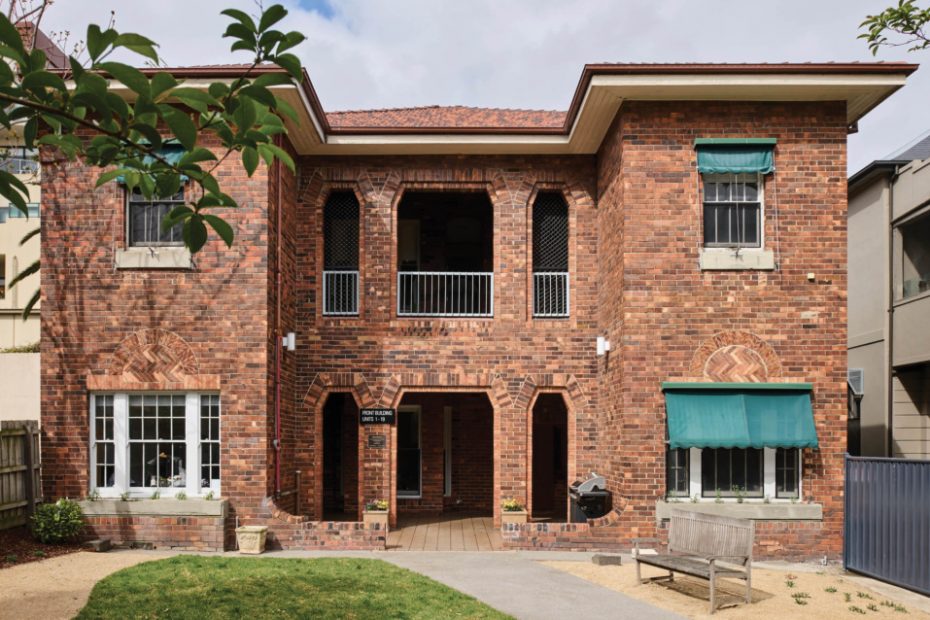The Social Housing Project Giving Young Women A Safe Place To Live
Housing
Bridge It CEO and founder Carla Raynes has been the driving force behind The Cocoon, after more than 20 years of working in the homelessness sector.
Carla with her sister Jenna Wilson, Bridge It’s intake and partnerships coordinator.
A large butterfly mural represents the life-changing impact The Cocoon has on its residents.
For The Cocoon project, Bridge It secured the Melbourne building by partnering with community housing provider HousingFirst.
Jenna, who’s passionate about interior design, collaborated with designer Valerie Mack to create inviting interior spaces that considered the resident’s sensory needs.
The space underwent a four-month renovation.
‘The Cocoon feels like a real home,’ Carla says.
‘It creates a sense that we trust our residents and think that they deserve to live somewhere safe and beautiful.’
Youth homelessness charity Bridge It CEO and founder Carla Raynes says The Cocoon is unlike any other social housing initiative she’s seen in more than two decades working in the sector.
The heritage-listed property in St Kilda has been transformed into supportive accommodation with 16 self-contained apartments for young women aged between 17-21 who could otherwise face homelessness.
It took 18 months, more than $1.5m worth in donated pro-bono work and products and a collaboration between not-for-profit social housing provider HousingFirst to complete a major renovation of the 1860s building.
But with help from partners like builders Mirvac, Dulux, RPS, Smeg, and design consultation from Valerie Mack, Carla and her team proudly opened the doors of The Cocoon last month. And in contrast to most social housing, it looks and feels like a ‘real home’.
‘Due to systemic underfunding in the homelessness sector, there is typically a focus on putting as many roofs over heads as possible. This means that accommodation is often very basic, and furniture is cheap and easily replaceable,’ Carla says.
‘I have seen all kinds of horrific private rooming houses, with no locks on doors and cockroach infestations. The Cocoon looks like a high end Airbnb and not an accommodation for people who have experienced homelessness. The standard of the renovation in the apartments are so high, that it makes our young residents feel truly cared about. [It’s] truly a space where our residents can work on their recovery.’
It comes as homelessness in Victoria rose 24 per cent at the last census, as many grapple with the exponential rise in rental prices and cost-of-living, coupled with record-low vacancy rates.
Launching The Cocoon has been a dream for Carla and her twin sister Jenna Wilson since they started Bridge It in 2021, to help bridge ‘a big gap’ they’d seen in the community housing system. ‘I had been working in crisis accommodations where stays were only 6-8 weeks, which was not long enough to stabilise or find alternative housing,’ Carla says.
But it wasn’t until she connected with HousingFirst — who shared this vision to set up a longer-term living arrangement for young women — that this dream became a reality.
As the owner and landlord of the property, HousingFirst manages the tenancy and maintenance side of things, while Bridge It provides the support the residents need.
This includes access to lived-experience peer mentoring, social worker support, cooking groups, and pathways into long term housing and employment. Plus, with a team member on site every weekday and dedicated communal spaces designed to bring the residents together, there’s often therapeutic activities taking place in ‘The Butterfly Room’ lounge, or one-on-one meetings in a sensory space.
All the studio apartments are offered to tenants on an initial 12-month lease, with rents capped at 30 per cent of the resident’s income, however most residents pay using Centrelink payments like Youth Allowance.
‘Towards the end of the lease, we review how the residents are going and make a call on if we need to extend for a future 18 months. In the pilot phase, the average length of stay was around 16 months before the residents were stabilised and ready to move onto their independent housing,’ Carla says.
With four residents already living there, another 12 are set to move in over the next few weeks.
Many of the young women who now call The Cocoon home are teenagers who would have aged out of the foster care system. ‘From working in the sector, we could see that 17-year-olds were very at risk of homelessness,’ Carla says.
‘When a young person has been in residential care, they are exited on their 18th birthday. That means that young people were on occasions experiencing homelessness for the first time on their birthday.’
Instead of ending up in crisis accommodation or couch surfing, it means women like former resident Charlotte* are able to move into The Cocoon and find a ready-made-community waiting for them. In her time as a tenant, she completed her schooling, undertook a mechanic course, and found a job to support herself.
‘The Cocoon has offered me a safe and cozy space to be able to let my walls down and enjoy doing the little things in life. I have grown so much as a person in the past few months and having a little support group by my side,’ Charlotte says.
Carla says the ultimate goal of The Cocoon is to prove that it is possible to end the cycle of homelessness.
‘Working in an early intervention way can reduce the risk of our young residents going into prison, sleeping rough or ending up in psych wards. Our big dream is to continue to develop a model that is so effective that it is adopted across the country and plays a role in ending youth homelessness in Australia.’
Donate to support Bridge It here.
*An alias has been used to protect Charlotte’s privacy
